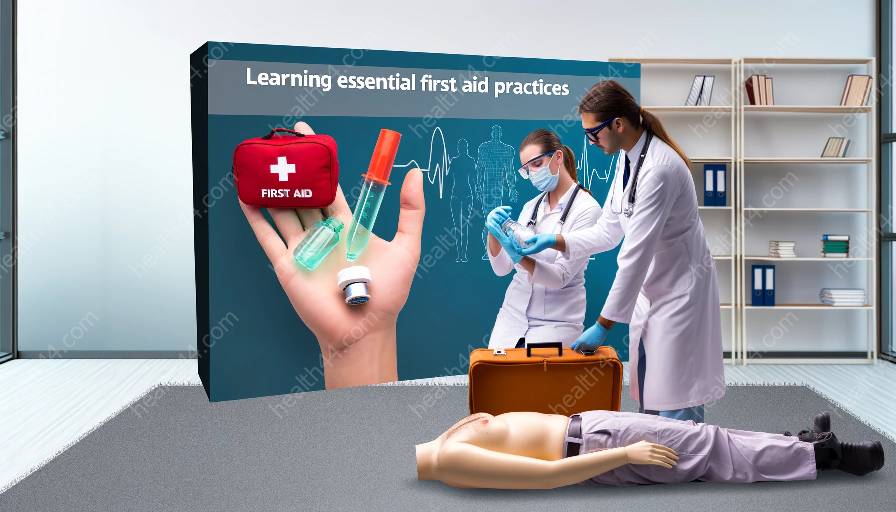When it comes to first aid, understanding the dangers of both heatstroke and hypothermia is crucial. In this guide, we'll explore the causes, symptoms, first aid procedures, and prevention strategies for these serious conditions. We'll also delve into the significance of health education and medical training in managing and preventing heatstroke and hypothermia.
Heatstroke
What is Heatstroke?
Heatstroke is a serious medical condition that occurs when the body's temperature-regulating system fails and body temperature rises to a dangerous level. It is often caused by prolonged exposure to high temperatures or physical exertion in hot environments, leading to a failure of the body's cooling mechanisms.
Causes of Heatstroke
The primary causes of heatstroke include prolonged exposure to high temperatures, dehydration, and excessive physical exertion in hot weather. Certain individuals, such as the elderly, infants, athletes, and outdoor workers, are at higher risk of developing heatstroke.
Symptoms of Heatstroke
The symptoms of heatstroke may include high body temperature, rapid heartbeat, rapid and shallow breathing, flushed skin, confusion, dizziness, headache, nausea, and even loss of consciousness. It is vital to recognize these symptoms and act promptly to prevent further complications.
First Aid for Heatstroke
Immediate action is crucial when dealing with heatstroke. Begin by moving the individual to a cooler area and removing unnecessary clothing. It's important to cool the person down rapidly using methods such as immersion in cold water, applying cold compresses, or using fans. Seek emergency medical help as soon as possible, as heatstroke can be life-threatening.
Preventing Heatstroke
Prevention is key in avoiding heatstroke. Stay hydrated, avoid excessive physical activity in hot weather, wear lightweight and light-colored clothing, and take frequent breaks in shaded or air-conditioned areas. It's particularly important to keep an eye on vulnerable populations, such as the elderly, young children, and individuals with certain medical conditions.
Hypothermia
What is Hypothermia?
Hypothermia occurs when the body loses heat faster than it can produce it, causing a dangerously low body temperature. It often happens in cold and wet conditions, especially when the body is exposed to frigid temperatures for an extended period.
Causes of Hypothermia
Hypothermia can be caused by exposure to cold air, cold water, wind, or dampness. It can also occur in situations where an individual is not properly dressed for the weather, leading to rapid heat loss from the body.
Symptoms of Hypothermia
The symptoms of hypothermia may include shivering, exhaustion, confusion, slurred speech, loss of coordination, weak pulse, and even unconsciousness. It's crucial to recognize these signs and take immediate action to address the condition.
First Aid for Hypothermia
If you suspect someone is experiencing hypothermia, it's essential to move them to a warm and dry place. Remove any wet clothing and wrap the person in blankets or warm clothing. Provide warm beverages if the individual is conscious. Seek medical attention promptly as hypothermia can lead to serious complications if left untreated.
Preventing Hypothermia
To prevent hypothermia, it's important to dress appropriately for the weather, especially in cold and wet conditions. Stay dry and wear several layers of loose-fitting clothing. Keep an eye on vulnerable populations, such as the elderly, young children, and those with certain medical conditions, as they are at a higher risk of developing hypothermia.
Importance of Health Education and Medical Training
Addressing Heatstroke and Hypothermia
Health education and medical training play a crucial role in addressing heatstroke and hypothermia. Educating individuals about the causes, symptoms, and first aid procedures for these conditions can help save lives. Training healthcare professionals and first responders in the proper management of heat-related emergencies is essential in ensuring timely and effective interventions.
Community Outreach and Awareness
Health education initiatives can include community outreach programs, workshops, and informational campaigns designed to raise awareness about the risks of heatstroke and hypothermia. By empowering individuals with the knowledge and skills to recognize and respond to these conditions, communities can work together to prevent and reduce the impact of heat-related illnesses.
Medical Training and Preparedness
Healthcare providers, emergency medical personnel, and first aid responders undergo training to recognize and manage heatstroke and hypothermia cases. Proper medical training equips these individuals with the necessary skills to provide immediate care and transport patients to appropriate healthcare facilities for further treatment.
Research and Innovation
Ongoing research and innovation in the field of healthcare are essential in developing new technologies, treatments, and preventive measures for heat-related illnesses. As medical knowledge continues to advance, it is important for healthcare professionals to stay updated on the latest practices and protocols for managing heatstroke and hypothermia.
Conclusion
Empowering Communities through Knowledge
Understanding the dangers of heatstroke and hypothermia is crucial in promoting public health and safety. By gaining knowledge about the causes, symptoms, first aid procedures, and prevention of these conditions, individuals and communities can become better equipped to respond to heat-related emergencies. Through health education and medical training, the importance of preparedness and swift action in addressing heatstroke and hypothermia cannot be overstated.



